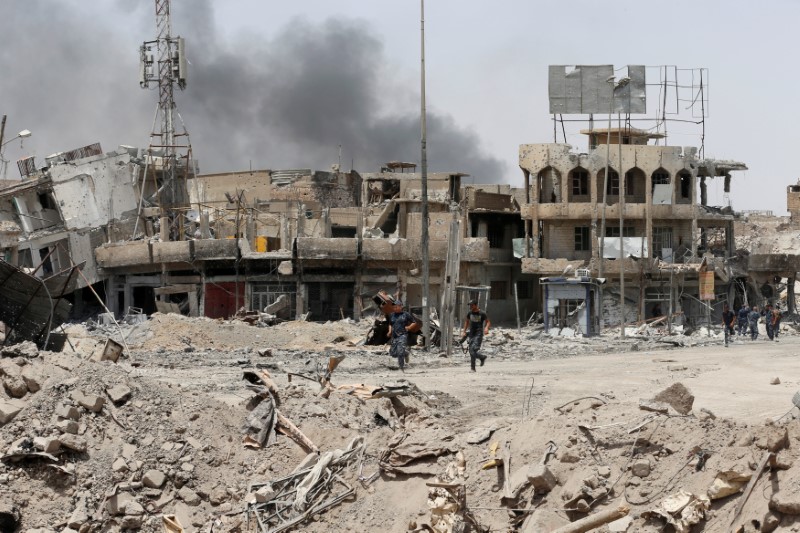
By Brad Brooks
(Reuters) – New Orleans is on track to become the next coronavirus epicenter in the United States, dashing hopes that less densely populated and warmer-climate cities would not be hit as hard by the pandemic, and that summer months could see it wane.
The plight of New Orleans – with the world’s highest growth rate in coronavirus cases and where authorities have warned hospitals could collapse by April 4 – also raises fears it may be a powerful catalyst in speedily spreading the virus across the south of the country.
New Orleans is the biggest city in Louisiana, the state with the third-highest case load of coronavirus in the United States on a per capita basis after the major epicenters of New York and Washington. The growth rate in Louisiana tops all others, according to a University of Louisiana at Lafayette analysis of global data, with the number of cases rising by 30% in the 24 hours before noon on Wednesday. On Tuesday, U.S. President Donald Trump issued a major federal disaster declaration for the state, freeing federal funds and resources.
Some 70% of Louisiana’s 1,795 confirmed cases to date are in the New Orleans metro area.
The culprit for the coronavirus in the Big Easy? Some blame Carnival.
“Mardi Gras was the perfect storm, it provided the perfect conditions for the spread of this virus,” said Dr. Rebekah Gee, who until January was the Health Secretary for Louisiana and now heads up Louisiana State University’s health care services division.
She noted that Fat Tuesday fell on Feb. 25 – when the virus was already in the United States but before the Centers for Disease Control and Prevention and national leaders had raised the alarm with the American public.
“So New Orleans had its normal level of celebration, which involved people congregating in large crowds and some 1.4 million tourists,” Gee said. “We shared drink cups. We shared each other’s space in the crowds. We shared floats where we were throwing not just beads but probably coronavirus off Carnival floats to people who caught it and took it with them to where they came from.”
Gee said that the explosive growth rate of the coronavirus in the Mississippi River port city means “it’s on the trajectory to become the epicenter for the outbreak in the United States.”
RESILIENT, BUT WARY
Dr. Peter Hotez is the dean of the National School of Tropical Medicine at Baylor College, a renowned vaccine scientist and an expert on the coronavirus pandemic.
He said that the rapid grip the virus is gaining on New Orleans was deeply worrying and a possible harbinger for worse to come across the south and for less densely populated and warmer cities across America.
“There has been some research and data suggesting that warmer, more humid weather could slow this epidemic,” he said. “The fact that this occurred on the Gulf Coast, which has some of the higher humidity and temperatures in the U.S., is a serious concern.”
Hotez noted that more research into how climate does or does not play a role in the spread of this coronavirus needs to happen, but acknowledged that experts hoped that warm weather and the coming summer months in the northern hemisphere would be natural buffers against it.
“If you look at this epidemic, we’ve not seen much in the hotter parts of the country. Texas has not had a lot. Arizona has not had a lot. Then all of a sudden – bam! – it appears in strength in New Orleans,” he said. “We have to follow this trend closely.”
Having an entirely new coronavirus epicenter kick off means that the United States may soon be dealing with multiple hot spots all at once, Hotez said – a worst-case scenario that could cripple healthcare systems.
If predictions were correct, the hospitals in New Orleans would struggle to manage past next week, Governor John Bel Edwards told a news conference on Tuesday.
New Orleans could well be the first major domino to fall in the south, starting a chain reaction in other metro areas in the region, said Hotez.
That is a serious concern for Houston, the fourth-largest city in the country and a major center for the oil industry. The two cities have historically strong links made even more so by an influx of New Orleans residents into Houston following Hurricanes Katrina and Harvey.
On the ground in New Orleans’ famed French Quarter, residents said they were definitely concerned, but that the virus was an entirely different threat from the natural disasters that routinely befall the city.
Jonathan Sanders, a 35-year-old general manager of the French Quarter brasserie Justine, said the city was calm and residents largely heeding authorities orders to stay inside.
“There is always something going on at all hours of the day or night. Now, without it all, it’s very peaceful,” he said. “You can park anywhere in the French Quarter.”
The virus, Sanders said, was so far easier to deal with than the death and destruction Hurricane Katrina unleashed in 2005, when over 1,800 people died along the Gulf Coast.
“When you think of the total destruction of Katrina… that was gut wrenching,” he said. “We’re fairly more resilient than other places that haven’t had so many tragic things happen to their city.”










